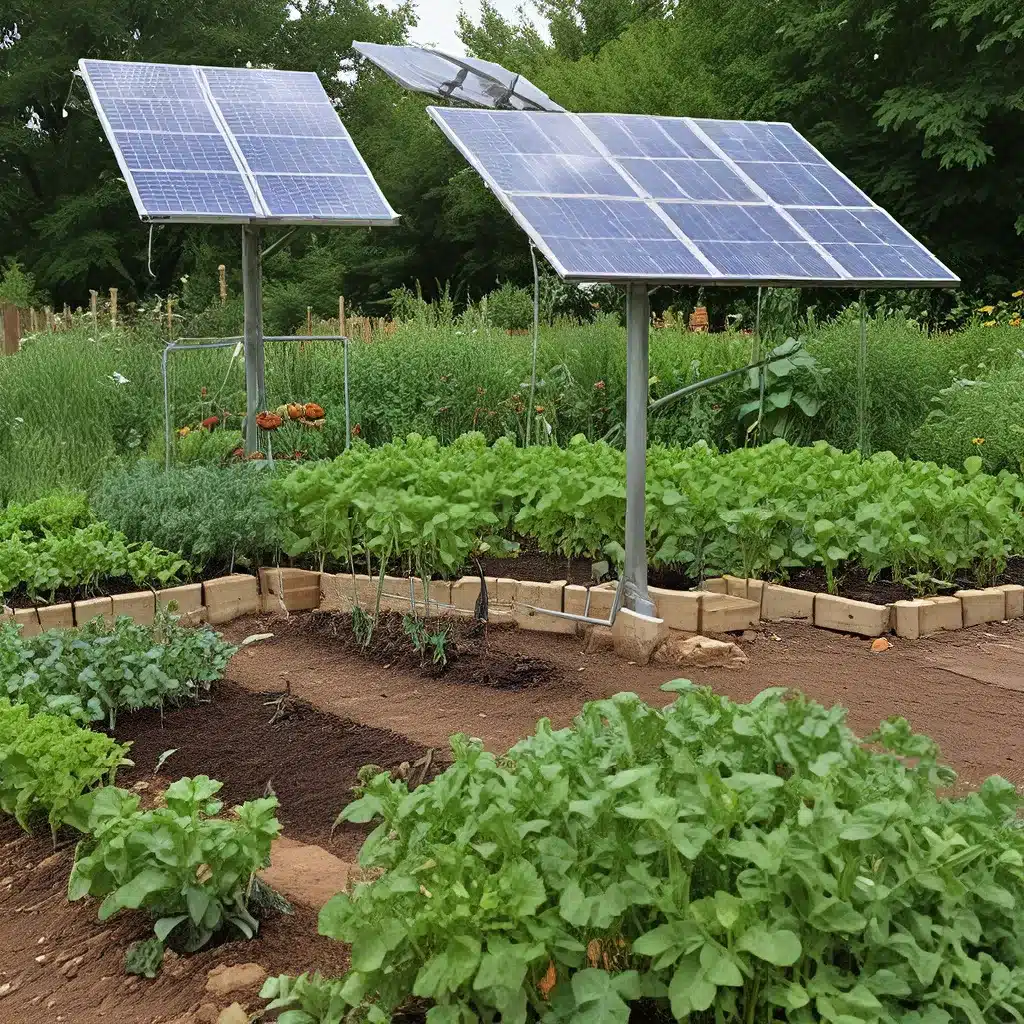
Ah, the promise of community gardens – where we can nurture the earth, cultivate our own nourishing bounty, and perhaps even harness the power of renewable energy to fuel our urban oases. As someone deeply passionate about sustainable living and self-reliance, I couldn’t resist diving into this topic.
Cultivating More Than Just Crops
You see, I’ve always been fascinated by the idea of community gardens. To me, they represent so much more than just a collection of plots where people grow their own fruits and vegetables. They’re hubs of community engagement, places where neighbors come together to share knowledge, swap stories, and foster a deeper connection to the land and to one another.
And when you layer renewable energy solutions on top of that, well, the possibilities are truly boundless. Imagine a community garden that not only provides fresh, healthy produce, but also generates its own clean power through solar panels or vertical wind turbines. It’s a vision of self-sufficiency that could help insulate us from the volatility of global supply chains and climate change – a way to take control of our own food and energy needs, right in the heart of the city.
Tapping into the Power of the Sun and Wind
Now, I know what you might be thinking – “Renewable energy in a community garden? Isn’t that just a pipe dream?” Well, my friends, I’m here to tell you that it’s very much a reality, and one that’s gaining traction across the globe.
Just take a look at the Rachel Carson Council, which has been working to establish urban farms and gardens that integrate renewable energy solutions. They’ve found that by coupling community gardens with solar panels and vertical wind turbines, these spaces can not only grow nutritious food, but also generate clean, sustainable power that can be fed back into the local grid.
And it’s not just about the gardens themselves – the organic waste produced by these urban oases can also be turned into nutrient-rich fertilizer, which can then be exported to developing countries to help boost their own food security and self-sufficiency. It’s a closed-loop system that just keeps on giving!
Empowering Communities, One Garden at a Time
But the benefits of this approach go beyond just the environmental impact. By empowering communities to take control of their own food and energy production, we’re also fostering a sense of resilience and self-reliance that can be truly transformative.
Imagine a world where every neighborhood had its own community garden, complete with solar panels and wind turbines – a place where people could come together to grow their own food, learn about renewable energy, and maybe even share a few laughs over the harvest. It’s a vision that could help us build more sustainable and self-sufficient cities, one garden at a time.
And let’s not forget the impact these spaces can have on food security and student well-being. By providing access to fresh, nutritious produce and empowering people to take control of their own food sources, community gardens can be a powerful tool in the fight against food insecurity and malnutrition, especially in urban areas.
Reaping the Rewards of Self-Sufficiency
Of course, I know that transitioning to a more self-sufficient and renewable-powered model of community gardening won’t be without its challenges. There will be logistical hurdles to overcome, financial barriers to address, and perhaps even some cultural resistance to break down. But I firmly believe that the rewards far outweigh the risks.
Just imagine the sense of pride and accomplishment that comes from harvesting your own fresh produce, or the satisfaction of knowing that the energy powering your community garden is 100% clean and renewable. It’s a level of self-reliance and independence that can be truly empowering, both on an individual and a community level.
And let’s not forget the resilience that these gardens can provide in the face of global crises, like the disruptions to food and energy supply chains that we’ve seen during the pandemic. When we can rely on our own local resources, we become less vulnerable to the whims of the global market and better equipped to weather whatever storms may come our way.
A Vision for a Sustainable Future
So, what’s the bottom line? Well, I believe that the integration of renewable energy and community gardening is a powerful and innovative solution that can help us build more sustainable, resilient, and self-sufficient cities. By tapping into the power of the sun and the wind, we can not only grow our own food, but also generate clean, renewable energy to power our urban oases.
And as we continue to grapple with the challenges of climate change and global food insecurity, these community gardens could become vital hubs of self-reliance and empowerment, helping us to take control of our own resources and shape a brighter, more sustainable future.
Of course, this is just the beginning. As we continue to explore and experiment with these ideas, I’m sure we’ll uncover even more innovative ways to harness the power of renewable energy and community gardening. But one thing is certain: the future is bright, and it’s growing right here in our own backyards.

